- Home
- J. T. Edson
Waco's Badge
Waco's Badge Read online
Waco’s Badge
J.T. Edson
For Joan’s daughter, Caroline,
despite her driving as far with a six iron
as I can with a five.
Contents
Author’s Note
Chapter 1
One Hell of An Edge
Chapter 2
Why Don’t You Tell Them Who I Am
Chapter 3
That was Belle Starr, Gents
Chapter 4
Go After the Gang
Chapter 5
That Man Tried to Kill Me
Chapter 6
I Need Good Men to Back Me
Chapter 7
You Know Belle Star Real Well
Chapter 8
Scared Close to White Haired
Chapter 9
I Want to Meet Belle Starr
Chapter 10
You Didn’t Do the “Goodnighting”
Chapter 11
You are Belle Starr
Chapter 12
They’re Blaming Belle Starr
Chapter 13
We’ve Been Paid to Kill You
Chapter 14
What is Your Interest in Him?
Chapter 15
This is A Hold Up, I’m Belle Starr
Chapter 16
Two Belle Starrs are One Too Many
Chapter 17
You’ve Got Yourself Two Texans
In Conclusion
Appendix 1
Appendix 2
About the Author
Other Books by J.T. Edson
Copyright
About the Publisher
Author’s Note
Although one version of the events recorded herein appeared as Case One, “The Set-Up,” Sagerbrush Sleuth, we did not at that time have access to the full details. These have now been made available to us by Alvin Dustine “Cap” Fog and, where information regarding the participation of Belle Starr is concerned, Andrew Mark “Big Andy” Counter, along with permission to reproduce them.
We realize that, in our present “permissive” society, we could include the actual profanities used by various people who appear in this volume, but we do not concede a spurious desire to produce “realism” is a valid reason for doing so.
As we refuse to pander to the current “trendy” employment of the metric system, unless we are referring to the calibres appropriate to various weapons—e.g. Luger 9mm—we will continue to employ miles, yards, feet, inches, pounds and ounces when referring to measurements and weights.
Lastly, to save our “old hands” from repetition and for the benefit of new readers, we are giving details of the background and special qualifications of Waco in Appendix One.
J.T. Edson,
Active Member, Western Writers of America
Melton Mowbray,
Leics.
England
Chapter 1
ONE HELL OF AN EDGE
DURING THE MID-1800S THERE WERE A NUMBER OF ways by which people, their property, or mail could be transported across the vast and ever changing terrain between the Mississippi River and the Pacific shore of the United States of America. One could travel on horseback, leading pack animals. Scorning such a new fangled idea as the wheel, an Indian brave-heart warrior had his squaw haul his belongings on a two pole travois attached to her mount.
Not that one was compelled to make a journey sitting astride a saddle. On some Western rivers such as the Rio Grande, steamboats—although smaller and less majestic than the fabled “side-wheelers” of the Big Muddy—could be found. Already the railroad had linked the East and West Coasts and spur lines were spreading like the strands of a spider’s web. For all that, such were the enormous areas involved, considerable distances remained inaccessible to the “iron horse” and must be traversed by some other form of wheeled vehicle.
Prior to the development of the internal combustion engine, with the exception of the railroad, the fastest form of public transport was the stagecoach. No other means of travelling had the glamor, nor received so much dramatic coverage in the sensational newspapers and magazines of the day. While goods in bulk could not be carried, such a vehicle served to deliver passengers, their smaller belongings and the United States’ mails to regions where, as yet, the railroads had not reached.1
The stagecoach as a form of public transport had not been invented in the United States, versions of it having been operating in most European countries since at least the seventeenth century. However, it had soon become apparent that the heavy and lumbering vehicles brought over from the “old countries” during the Colonial period were not suitable for the conditions which prevailed in the “New World.” Therefore, as befited a lusty, bustling, expanding and innovative young nation, in which fresh thought and creative notions were encouraged instead of being repressed, men had sought to make improvements.
Not merely sought, in fact, but achieved!
“Yankee” designers, generally in the North-Eastern section of the country—New Hampshire, Maine, Vermont, Connecticut, Rhode Island and Massachusetts—known as “New England,” had brought the stagecoach to such a peak of perfection that the various improvements were already being copied throughout the rest of the world.
The stagecoach wending its way along the winding trail through the hilly country between Phoenix and Tucson, about two miles from the boundary of Pinal and Pima Counties, was a typical example of the way in which such vehicles had been developed.
Set on “dished” wheels which were larger at the rear than in front,2 weighing three thousand pounds and capable of carrying a four thousand pound load, the coach was structurally powerful without being in any way cumbersome. Its woodwork was choicest hickory and, apart from brass trimming, its metal was all steel, with axles fourteen inches long and two and a half inches thick.3 Inside, the cushions were built over coiled steel springs, padded with horsehair and, although it had become somewhat scuffed by much use, the seats were covered with the very best available calf leather. Some further comfort for the passengers was obtained by having the body swung upon leather “thorough-braces”; long, heavy straps rove through stout steel stanchions lifting above the front and rear axles, left and right. In addition, layer upon layer of “live” leather created a velvety, hammock-like swing and a cushioning to the body that has scarcely been equalled even by the best modern springing in motor vehicles.
Entrance to the stagecoach was via the doorways at the sides, with hanging steel step plates as an aid to boarding. Although the early models used in the East had had glass in the doors and small quarter windows in the frames on each side, this had proved impractical on the far from smooth and carefully laid roads west of the Big Muddy. Instead, the unglazed windows beside the front and rear seats were protected by canvas curtains. These rolled up and down upon a stout slat, being secured by eyes and turnbuttons when down, or held in a rolled-up position by leather straps.
Inside, two of the three seats faced forward and a third to the rear. The center seat could be lowered to form a bed and, if there were not too many passengers, the occupants could lie down to rest as the coach rocked along. Each seat was sufficiently spacious to accept three normal sized people without too much crowding. As there was provision for three more seats on the roof—which was covered with the very heaviest of painted waterproof duck, the coach could offer transportation for twelve to fifteen passengers in reasonable comfort and had, on rare occasions, packed in as many as twenty-four. There were leather “tug” straps on each side, to which those sitting next to the windows could cling if necessary. As the internal seats were fairly close together, whoever was on the front seat and facing to the rear had to “dovetail” his legs—one name for the practice—with those of the forward-facing occupants
in the center. It was an arrangement which, at least openly, did not meet with the approbation of the “good” ladies of the period.
As was frequently the case, the coach was brightly painted in red, gold and yellow. The body was ribbed and panelled. It had floral and vine patterns on the side panels and the doors were inscribed with the words, “PHOENIX to TUCSON” and, as it travelled to and from the capital city of the territory, the paintwork was kept fresh despite generally being coated with dust or mud dependent upon the time of the year. Because the bottom of the vehicle curved like a boat, the side ribs came to a prow-like point beneath the seat of the driver—under which was announced, somewhat prematurely, “ARIZONA STATE STAGE LINE, Coach Three”—and ended in a blunter “stern” at the rear.
In the European type of vehicle from which the American “Concord” stagecoaches evolved,4 the makers having little concern for the comfort and well being of even so important an employee as the driver, the “box” serving as his seat was part of the chassis. Brought up in the concept that “all men are born equal,” such disinterest was unacceptable in the United States. Therefore, also as an aid to greater efficiency, the American manufacturers had attached the seat for the driver to the front of the body, with its top forming a shoulder high rest for his back and making his demanding task somewhat less tiring. Furthermore, unlike his European predecessors, in this way he too received the benefit of the excellent springing offered by the thoroughbracing.
Sitting at the right side of the box, where a powerful foot brake was provided, the driver was some six feet from the ground. As was the case with the armed man who generally rode beside him, this provided all round visibility of a high order. Directly beneath their shelf-like seat, a small compartment was supplied in which such valuables as a strongbox or the mail sacks could be carried. Beneath this was a larger, leather-shrouded “boot” for baggage. However, heavier items within reason were transported on a hinged platform—also provided with a protective leather, or canvas, hood—supported by chains, at the rear of the coach. If these two should prove insufficient and no passengers were up there, railings around the top offered space for still more luggage.
Being drawn in this particular instance by six horses, in three teams of two, to control such a vehicle called for great skill. A pair of leather reins came back to the expert hands of the driver from each of the teams and manipulating the “ribbons” was no mean feat. It was simplified to a certain extent by each rein being split at the forward end. The separated ends of the right rein was linked to the off side of each horse’s jaw and those of the left to the near side. By this means, a single pull directed both animals of the team. For all that, driving a stagecoach was hardly a task for the uninitiated.5
Six foot tall, lean and oak brown from long exposure to the elements, at forty-nine, Walter Tract was a driver of some ten years’ experience. Unlike some of his contemporaries, he did not effect flamboyant dress and mannerisms to indicate he was a highly skilled workman. His attire was little different from that of a working cowhand, except that his well worn Levi’s pants were tucked into blunt toed boots with low heels. A walnut handled Colt Civilian Model Peacemaker rode in the cross draw holster on the left side of his gunbelt,6 but in the event of trouble he relied more upon the man at his left side than his own ability with the weapon.
Matching the driver in height, build and depth of tanning, Benjamin Eckland was a few years younger. He too was dressed in the style of a cowhand, which indeed he had been before taking on the—on the surface—easier occupation of “shotgun messenger.” There was something dour about him which suggested he would stand no nonsense and was an asset in his chosen line of work. However, although his buscadero gunbelt supported two wooden butted Colt Cavalry Peacemakers in its fast draw holsters and he was nursing a Greener twin barrelled ten gauge shotgun, the tubes only twenty inches in length, he had nothing of the swaggering frontier gun fighter frequently described with great relish in the “blood and thunder” literature which found as large a market in the West as back East. Rather he was a calm, competent guard who took no unnecessary chances in the performance of his duty. This did not imply he was cowardly. He had broken up an attack by Apaches and, when they tried to carry out a poorly planned hold up, left a gang of would-be stagecoach robbers with one dead and three wounded.
“Just what the hell is this country coming to, Ben?” Tract inquired, breaking the silence—as far as conversation went—which had endured since leaving the last way station after having changed horses. “A sheriff takes a posse after and catches a bunch of god-damned owlhoots who’ve robbed a bank in his bailiwick and now some ‘mother-something’7 fancy law wrangler from back East makes the court turn ’em loose because he went over his county line and grabbed ’em.”
“Don’t seem at all right to me, Walt, and that’s a living fact,” Eckland replied, the topic currently arousing much interest and heated discussion throughout the whole of Arizona Territory. “More ’specially seeing’s how said fancy law wrangler from back East is threatening to sue the sheriff and his county for him doing same.”
“You’re joshing me, Ben!” the driver asserted, knowing his companion had a droll sense of humor beneath the dour exterior.
“I only wish I was,” the guard replied grimly. “Lanky back to the way station told me about it. He got the word from a whiskey drummer’s passed through yesterday. Seems like the law wrangler’s let on as he’s ready and willing to fight the case all the way clear up to the Supreme Court of these here United States should it ‘come necessary.’”
“But how the shit can he figure’s how he’s got him a god-damned case to fight?”
“Allows the sheriff didn’t have no legal jurisdiction in the county where he took those owlhoot sons-of-bitches. Which being, they was abdu—abduct—some such fancy law wrangling word, anyways—again’ their will and same’s against the Constitution of the good old U.S. of A.”
“God damn it all!” Tract protested, despite being aware that a sheriff technically had authority only in the county by which he was elected to the office. “That can’t be the legal law?”
“Said fancy law wrangler from back East allows it to be,” Eckland said dryly, but with an underlying bitterness and anger which was all too apparent to anybody who knew him as well as the other man on the box. “And, should it be so, that gives every god-damned owlhoot in this whole country one hell of an edge over the law. All he’ll have to do is go across a county, or State line, and the peace officers who’re after him won’t be able to follow.”
“I bet the sheriff’s right now wishing he’d made wolf bait of every last son-of-a-bitch of that gang instead of fetching them in,” Tract declared, sharing his companion’s appreciation of the situation and equally perturbed by the thought of how criminals could profit out of the successful outcome—from the point of view of the Eastern lawyer—of the case. “Fact being, seeing what he could turn loose should he win, somebody should do it to that ‘mother—’!”
The angry tirade came to an abrupt halt!
Despite the strength of his feelings on the subject being discussed, the driver had instinctively kept his attention upon the trail ahead. Selected as offering the easiest going through the hilly terrain, it wound in a serpentine fashion across the side of the sloping ground. Although visibility ahead was somewhat restricted, he had seen something which he considered to be of greater importance than what he was saying.
A riderless horse, its one-piece reins suspended across its neck, was running around the bend which the stagecoach was approaching!
To a person raised in the East, such a sight would have been interesting without arousing too much concern!
Anywhere on the vast open ranges west of the Mississippi River, however, there was nothing more disturbing than a horse running with an empty saddle!
In that sparsely occupied and vast land, where innumerable natural hazards lurked—even discounting the various perils created by hostile human beings
—to be left afoot suggested a vastly greater danger than could be envisaged by people in the more densely populated and civilized East!
Therefore, interested as he had been in the activities of the Eastern lawyer, the driver put the matter from his mind as soon as the riderless horse came into view!
Keeping a watch on his surroundings just as instinctively while talking, Eckland also forgot the conversation when the animal made its appearance.
Such was the nature of the terrain currently being traversed by the stagecoach, their point of vantage on the box notwithstanding, neither Tract nor the shotgun messenger could satisfy their curiosity concerning the person who had lost the horse. Nor, as far as they could hear, was whoever had been dislodged from its back giving any indication of being close by. If he was able, when left in such an unsatisfactory situation, a cowhand would have raised the already traditional cry of, “Catch my saddle!,”8 in the hope of somebody being near enough to hear and comply. Of course, he might be too badly injured to speak. Or he might be too far away for his voice to have reached the stagecoach. He might, in fact, not even be a cowhand.
The latter was a distinct possibility!
Without the need to guide his actions consciously, Eckland was studying the horse. A washy bay gelding of about fourteen hands and with no particularly distinguishing marks, it was not an impressive creature. Rather the opposite, in fact. For all that, there were a few indications to his range-wise eyes which led him to assume the absent rider was not a cowhand. Instead of the more general “split end” variety, its reins were in a single piece. The former were more favored in the West—particularly by cowhands—as, many horses being trained to stand still when they were dangling free, it meant that the dropped reins—if one was thrown—soon caused the animal to come to a stop. Single girthed and “apple” horned, the saddle was a normal enough rig for the area. There was, however, no coiled lariat strapped to the horn and a cowhand was rarely without such an important tool of his trade. That there were neither blankets nor a bed roll attached to the cantle of the saddle was less informative. Their absence indicated the dislodged rider was not too far from some form of accommodation.

 Calamity Jane 11
Calamity Jane 11 The Floating Outift 33
The Floating Outift 33 Cap Fog 5
Cap Fog 5 The Floating Outfit 34
The Floating Outfit 34 The Code of Dusty Fog
The Code of Dusty Fog The Floating Outfit 21
The Floating Outfit 21 The Floating Outift 36
The Floating Outift 36 Calamity Jane 2
Calamity Jane 2 Calamity Jane 6: The Hide and Horn Saloon (A Calamity Jane Western)
Calamity Jane 6: The Hide and Horn Saloon (A Calamity Jane Western) Waco 7
Waco 7 The Floating Outfit 25
The Floating Outfit 25 Waco 7: Hound Dog Man (A Waco Western)
Waco 7: Hound Dog Man (A Waco Western) The Floating Outfit 47
The Floating Outfit 47 The Floating Outfit 42: Buffalo Are Coming!
The Floating Outfit 42: Buffalo Are Coming!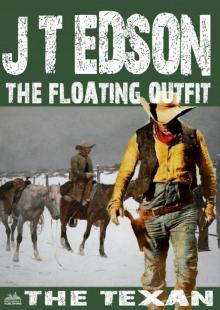 The Floating Outfit 46
The Floating Outfit 46 Dusty Fog's Civil War 11
Dusty Fog's Civil War 11 The Floating Outfit 61
The Floating Outfit 61 The Owlhoot
The Owlhoot Alvin Fog, Texas Ranger
Alvin Fog, Texas Ranger The Floating Outfit 34: To Arms! To Arms! In Dixie! (A Floating Outfit Western)
The Floating Outfit 34: To Arms! To Arms! In Dixie! (A Floating Outfit Western) The Floating Outfit 44
The Floating Outfit 44 Dusty Fog's Civil War 10
Dusty Fog's Civil War 10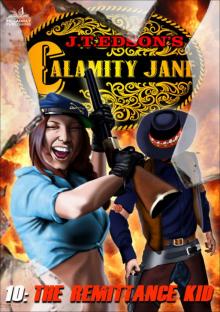 Calamity Jane 10
Calamity Jane 10 Cap Fog 4
Cap Fog 4 The Floating Outfit 51
The Floating Outfit 51 The Floating Outfit 50
The Floating Outfit 50 The Floating Outfit 49
The Floating Outfit 49 The Floating Outfit 10
The Floating Outfit 10 Apache Rampage
Apache Rampage The Floating Outfit 15
The Floating Outfit 15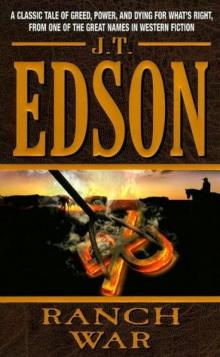 Ranch War
Ranch War The Floating Outfit 11
The Floating Outfit 11 The Devil Gun
The Devil Gun Sacrifice for the Quagga God (A Bunduki Jungle Adventure Book 3)
Sacrifice for the Quagga God (A Bunduki Jungle Adventure Book 3) Comanche (A J.T. Edson Western Book 1)
Comanche (A J.T. Edson Western Book 1) The Floating Outfit 48
The Floating Outfit 48 Wacos Debt
Wacos Debt The Rebel Spy
The Rebel Spy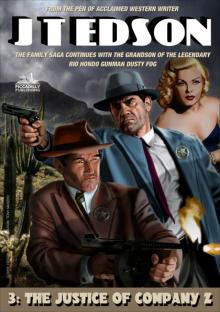 Cap Fog 3
Cap Fog 3 Trouble Trail
Trouble Trail Cold Deck, Hot Lead
Cold Deck, Hot Lead Rockabye County 4
Rockabye County 4 The Bullwhip Breed
The Bullwhip Breed Set Texas Back On Her Feet (A Floating Outfit Western Book 6)
Set Texas Back On Her Feet (A Floating Outfit Western Book 6)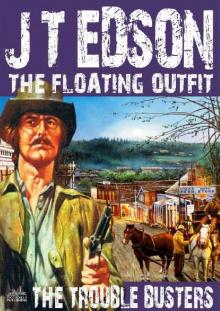 The Floating Outfit 25: The Trouble Busters (A Floating Outfit Western)
The Floating Outfit 25: The Trouble Busters (A Floating Outfit Western) Fearless Master of the Jungle (A Bunduki Jungle Adventure
Fearless Master of the Jungle (A Bunduki Jungle Adventure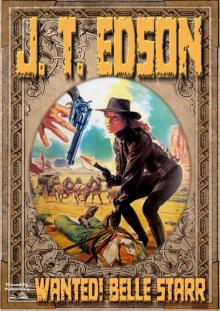 Wanted! Belle Starr!
Wanted! Belle Starr! The Big Hunt
The Big Hunt Running Irons
Running Irons The Floating Outfit 19
The Floating Outfit 19 You're in Command Now, Mr Fog
You're in Command Now, Mr Fog The Floating Outfit 27
The Floating Outfit 27 Texas Killers
Texas Killers Ole Devil and the Mule Train (An Ole Devil Western Book 3)
Ole Devil and the Mule Train (An Ole Devil Western Book 3) Bunduki and Dawn (A Bunduki Jungle Adventure Book 2)
Bunduki and Dawn (A Bunduki Jungle Adventure Book 2) The Fortune Hunters
The Fortune Hunters The Floating Outfit 12
The Floating Outfit 12 The Hide and Tallow Men (A Floating Outfit Western. Book 7)
The Hide and Tallow Men (A Floating Outfit Western. Book 7) Young Ole Devil
Young Ole Devil Slip Gun
Slip Gun The Drifter
The Drifter The Floating Outfit 45
The Floating Outfit 45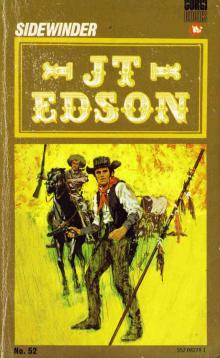 Sidewinder
Sidewinder The Ysabel Kid
The Ysabel Kid Waco 6
Waco 6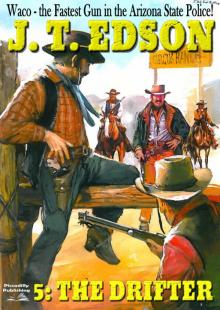 Waco 5
Waco 5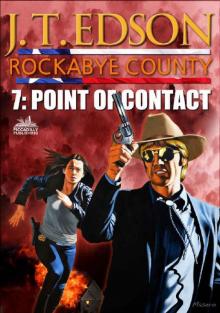 Point of Contact
Point of Contact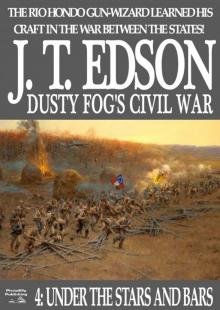 Under the Stars and Bars (A Dusty Fog Civil War Western Book 4)
Under the Stars and Bars (A Dusty Fog Civil War Western Book 4) The Floating Outfit 9
The Floating Outfit 9 Under the Stars and Bars
Under the Stars and Bars .44 Caliber Man
.44 Caliber Man The Floating Outfit 17
The Floating Outfit 17 Ole Devil at San Jacinto (Old Devil Hardin Western Book 4)
Ole Devil at San Jacinto (Old Devil Hardin Western Book 4) The Bloody Border
The Bloody Border A Horse Called Mogollon (Floating Outfit Book 3)
A Horse Called Mogollon (Floating Outfit Book 3) Waco 3
Waco 3 The Texan
The Texan The Floating Outfit 35
The Floating Outfit 35 Mississippi Raider
Mississippi Raider The Big Gun (Dusty Fog's Civil War Book 3)
The Big Gun (Dusty Fog's Civil War Book 3) Goodnight's Dream (A Floating Outfit Western Book 4)
Goodnight's Dream (A Floating Outfit Western Book 4) Waco 4
Waco 4 From Hide and Horn (A Floating Outfit Book Number 5)
From Hide and Horn (A Floating Outfit Book Number 5) The Floating Outfit 18
The Floating Outfit 18 Slaughter's Way (A J.T. Edson Western)
Slaughter's Way (A J.T. Edson Western) Dusty Fog's Civil War 7
Dusty Fog's Civil War 7 Two Miles to the Border (A J.T. Edson Western)
Two Miles to the Border (A J.T. Edson Western)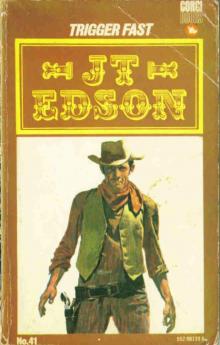 Trigger Fast
Trigger Fast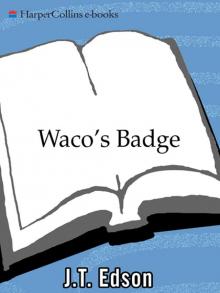 Waco's Badge
Waco's Badge A Matter of Honor (Dusty Fog Civil War Book 6)
A Matter of Honor (Dusty Fog Civil War Book 6) The Half Breed
The Half Breed Bunduki (Bunduki Series Book One)
Bunduki (Bunduki Series Book One) Kill Dusty Fog
Kill Dusty Fog Get Urrea! (An Ole Devil Hardin Western Book 5)
Get Urrea! (An Ole Devil Hardin Western Book 5) Dusty Fog's Civil War 9
Dusty Fog's Civil War 9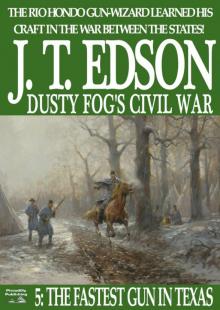 The Fastest Gun in Texas (A Dusty Fog Civil War Book 5)
The Fastest Gun in Texas (A Dusty Fog Civil War Book 5) Sagebrush Sleuth (A Waco Western #2)
Sagebrush Sleuth (A Waco Western #2) Quiet Town
Quiet Town Is-A-Man (A J.T. Edson Standalone Western)
Is-A-Man (A J.T. Edson Standalone Western) Rockabye County 5
Rockabye County 5 The Floating Outfit 14
The Floating Outfit 14 Cure the Texas Fever (A Waxahachie Smith Western--Book 3)
Cure the Texas Fever (A Waxahachie Smith Western--Book 3) The Floating Outfit 13
The Floating Outfit 13 The Road to Ratchet Creek
The Road to Ratchet Creek